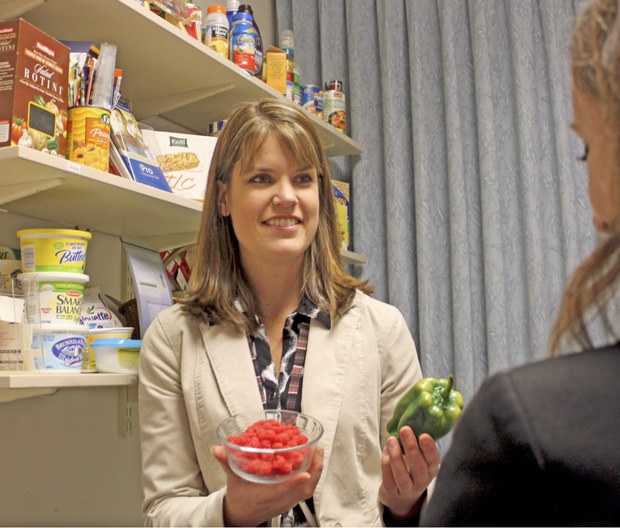By Rochelle McGee-Huntington
MultiCare Health System
We receive a lot of questions about diabetes at the MultiCare Center for Diabetes Education, we thought it would be helpful to share some of our answers. After all,diabetes affects 25.8 million people in the U.S., about 8.3 percent of our population.
If you have additional questions that aren’t answered below, including questions about insurance coverage, feel free to call the MultiCare Center for Diabetes Education:
• 253-372-7010 in Covington, Auburn and South King County.
• 253-403-3131 for questions about diabetes and children.
What are the symptoms?
Type 2 diabetes, previously known as adult-onset diabetes, is the most common type of diabetes. Most people who have type 2 diabetes have no symptoms until they have had diabetes for years. When their blood sugar gets high enough for them to have the symptoms, they may experience:
• Increased thirst and urination.
• Fatigue.
• Numbness or tingling to the hands or feet.
• Blurred vision.
• Slow healing of cuts or sores.
• Dry itchy skin and frequent infections.
What are the risk factors; how often should I be screened?
People should be screened for type 2 diabetes at least by the age of 45, and have the test repeated every three years, according to the American Diabetes Association. However, younger people should be screened earlier if they have any risk factors such as a family history of diabetes or are overweight or obese. One way to tell whether you are carrying extra weight is to measure your waist circumference. If it’s over 35 inches for a women or over 40 inches for a man, you have extra weight around your waist.
Type 2 diabetes is also more common in certain ethnic groups, such as African Americans, Hispanics, Pacific Islanders and Native Americans. Type 2 diabetes is becoming increasingly common in kids and teens, so doctors have begun to screen patients at younger ages.
Are there any tests that can determine whether I have diabetes?
There are three different blood tests that can be done to see whether someone has diabetes. These tests need to be confirmed by a second lab test to diagnose someone with diabetes.
1. Fasting blood glucose: Less than 100 mg/dl is normal. 100 to 125 mg/dl is *Pre-diabetes. 126 mg/dl or higher is diabetes.
2. A 75 gram oral glucose tolerance test: Drink 75 grams of glucose and have your blood tested one hour later. Normal: less than 140 mg/dl.
3. A1c test: 6.5 percent or higher is diagnostic of diabetes. This blood test tells your average blood glucose for the last three months by giving the percentage of how much glucose is stuck to your red blood cells.
If I am diagnosed with diabetes, is there any treatment?
For people who have type 2 diabetes, lifestyle changes are the main treatments for their disease. It is very important that when a person is diagnosed with diabetes that they go to a diabetes education program and learn all the diabetes self management skills so they can keep their blood sugars in control and live a long and healthy life.
When people come to us ready to make change and get their health in control, we see amazing results. We regularly see people with high glucose, high blood fats and high blood pressure, who then lose weight through a healthy diet and exercise, bring all their numbers down to the normal range.
What can be done to prevent diabetes?
Lifestyle changes are the key to controlling or preventing type 2 diabetes. People who keep their blood sugars, blood pressure and blood fats (cholesterol) in the target ranges through diet and exercise and sometimes medications can prevent or delay the complications of diabetes. It is uncontrolled diabetes that causes the damage to your body.
If you are diagnosed with pre-diabetes, that means the cells in your body are becoming resistant to the insulin your pancreas makes, and your blood glucose levels are higher than normal but not yet high enough to be diagnosed with diabetes. However, if you don’t make some lifestyle changes now, you will most likely develop type 2 diabetes. The less fat and more muscle you have will decrease your resistance to insulin. So as they say, you need to move more and eat less!
Here are three quick tips:
* Eat a healthy diet: Watching portion sizes, avoid fried foods or high-fat foods, and eat fruits and vegetables daily. Just as important as a healthy diet, is being
• Be physically active: Walk 30 minutes a day, five days a week; take the stairs instead of the elevator. Exercise uses up sugar in your blood, decreases your resistance to insulin and helps you lose weight.
• Drop some weight: If you are overweight, a reduction in your weight of only 5 percent to 10 percent will greatly reduce your risk of getting diabetes. A great way to assess your risk of getting type 2 diabetes is to go towww.diabetes.org/risk and take a short quiz.
Diabetes is the leading cause of kidney failure, non-traumatic lower-limb amputations (not related to injury), and new cases of blindness among adults. It’s also a major cause of heart disease and stroke, and the seventh leading cause of death. At MultiCare, we’re committed to helping people in our community avoid the factors that put them at-risk for diabetes. We offer early intervention for those with prediabetes and we provide medical care and support to ensure that those who have diabetes are able to live as fully as possible.
Rochelle McGee-Huntington is a diabetes educator with the MultiCare Center for Diabetes Education. For more information, call 253-403-1726 or visit www.multicare.org/home/diabetes-care.


